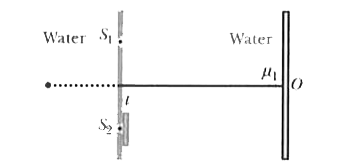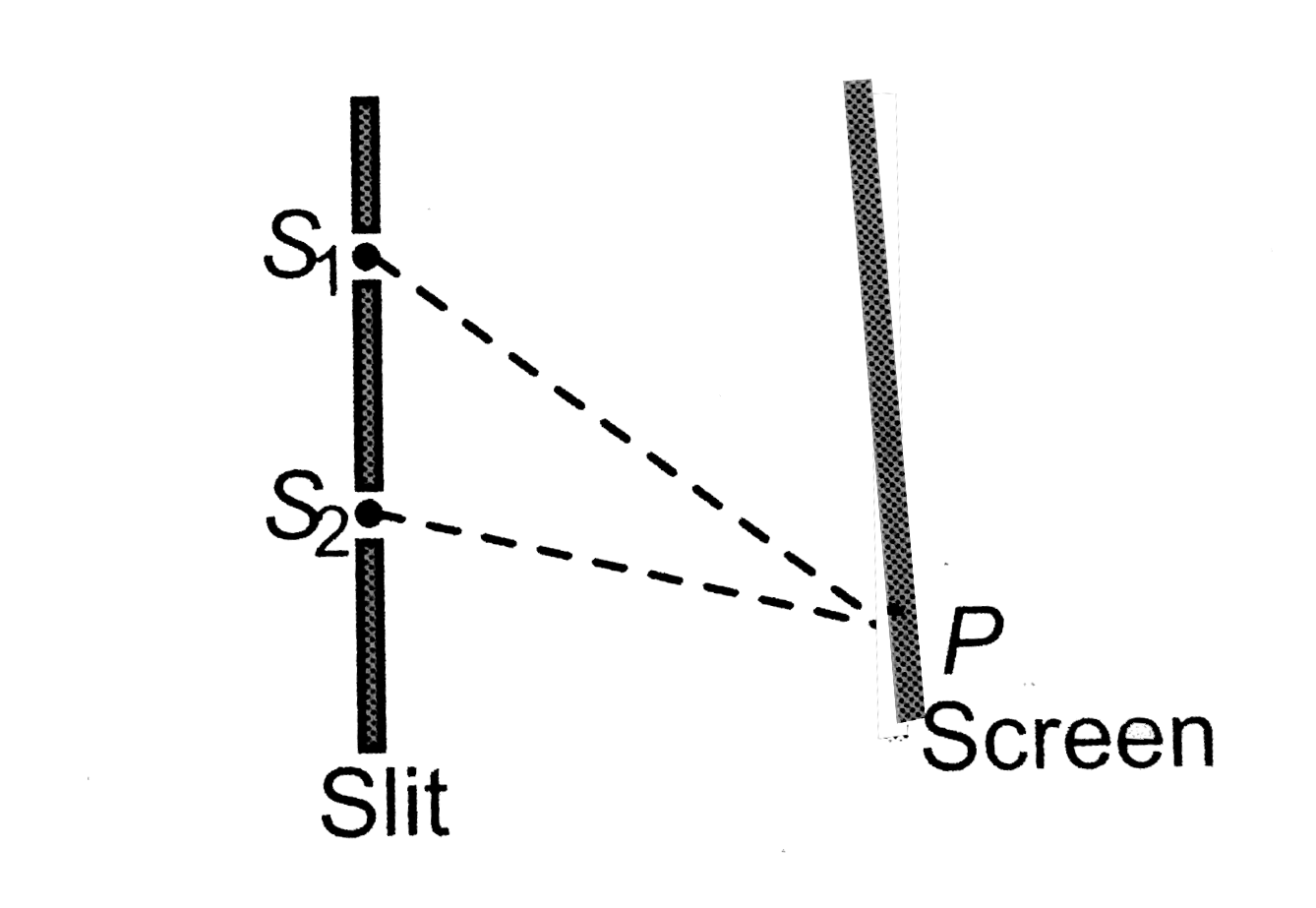Young's double-slit experiment is conducted in water (μ1) as shown in figure and a glass plate of thickness t and refractive index μ2 is placed in the path of S2. Find the magnitude of the optical path difference at 'O'.

Optical path difference at 'O' is (μ2μ1−1)t.
Optical path difference at 'O' is (μ2−μ1)t.
Optical path difference is independent of position of glass plate, provided light from S2 passes through it.
None of the above
Equivalent length of the glass plate in water =μ2tμ1
∴O.P.D.=(μ2μ1−1)t
Topper's Solved these Questions
- BOOK - FIITJEECHAPTER - GMP ASSESMENTEXERCISE - Comprehension58videos
GMP ASSESMENT
- BOOK - FIITJEECHAPTER - GMP ASSESMENTEXERCISE - Numerical Based61videos
GMP ASSESMENT
- BOOK - FIITJEECHAPTER - GMP ASSESMENTEXERCISE - Assertion & Reason15videos
GMP ASSESMENT
- BOOK - FIITJEECHAPTER - GENERAL PHYSICSEXERCISE - MATRIX MATCH TYPE3videos
GENERAL PHYSICS
- BOOK - FIITJEECHAPTER - GRAVITATIONEXERCISE - Numerical based Question2videos
GRAVITATION
Similar Questions
When a thin transparent plate of thickness t and refractive index μ is placed in the path of one the two interfering waves of light, then the path difference changes by
View SolutionWhen a transparent parallel plate of uniform thickness t and refractive index μ is interposed normally in the path of a beam of light, the optical path is
View Solution
Knowledge Check
- Question 1 - Select One
A YDSE is conducted in water (μ1) as shown in figure. A glass plate of thickness t and refractive index μ2 is placed in the path of S2. The optical path difference at O is
 A(μ2−1)tB(μ1−1)tC(μ2μ1−1)tD(μ2−μ1)t
A(μ2−1)tB(μ1−1)tC(μ2μ1−1)tD(μ2−μ1)t - Question 2 - Select One
A Young's double-slit experiment is conducted in water (n1) as shown in the following figure, and a glass plate of thickness t and refractive index n2 is placed in the path of S2. Wavelength of light in water is λ. Find the magnitude of the phase difference between waves coming from S1 and S2 at O.
 A∣∣∣(n2n1−1)t∣∣∣2πλB∣∣∣(n2n1−1)t∣∣∣2πλC|(n2−n1)t|2πλD|(n2−1)t|2πλ
A∣∣∣(n2n1−1)t∣∣∣2πλB∣∣∣(n2n1−1)t∣∣∣2πλC|(n2−n1)t|2πλD|(n2−1)t|2πλ - Question 3 - Select One
Young's double slit experiment is conducted in a liquid of refractive index μ1 as shown in figure. A thin transparent slab of refractive index μ2 is placed in front of the slit s2. The magnitude of optical path difference at 'O' is
 A∣∣∣(μ2μ1−1)t∣∣∣B∣∣∣(μ1μ2−1)t∣∣∣C|(μ2−μ1)t|D|(μ2−1)t|
A∣∣∣(μ2μ1−1)t∣∣∣B∣∣∣(μ1μ2−1)t∣∣∣C|(μ2−μ1)t|D|(μ2−1)t|
In a Young's double slit experimental arrangement shown here, if a mica sheet of thickness t and refractive indec μ is placed in front of the slit S1, then the path difference (S1P−S2P) is
 View Solution
View SolutionIn Young's double-slit experiment, if both the slits are covered by a thin transparent sheet of thickness t and refractive index n, the optical path difference between the two interfering waves
View SolutionIn Young's double-slit experiment, let A and B be the two slit. A thin film of thickness t and refractive index μ is placed in front of A. Let β= fringe width. Then the central maxima will shift
View SolutionLight travels through a glass plate of thickness t and refractive index μ. If c is the velocity of light in vaccum, the time taken by the light to travel this thickness of glass is
View SolutionLight travels through a glass plate of thickness t and refractive index μ. If c is the speed of light in vacuum, the time taken by light to travel this thickness of glass is
View Solution
